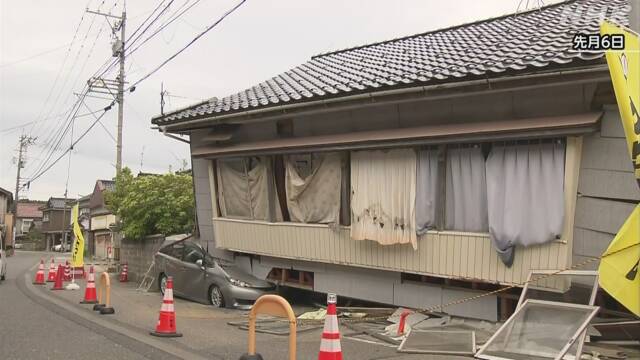It has been one month since the earthquake in the Noto region of Ishikawa Prefecture with a seismic intensity of over 6 was observed in five days. In the Noto region, active seismic activity continues, with more than 5 earthquakes with seismic intensity 1 or higher observed after the earthquake. Experts have analyzed that earthquakes have occurred in areas that were not initially seen during the past month of activity, and are urging continued vigilance.
Seismic activity has been increasing in the Noto region of Ishikawa Prefecture since 2020, and a magnitude 5.6 earthquake occurred on the 5th of last month, and a tremor with a seismic intensity of over 6 was observed in Suzu City.
According to the summary of the Japan Meteorological Agency, after an earthquake with a seismic intensity of 6 or higher, 4 earthquakes with a seismic intensity of 8 or higher were observed by 1 a.m. on the 122th, and
5 earthquake with a seismic intensity of 1 or higher
, 4 times with a seismic intensity of 5, and 3
times with
a seismic intensity of 10.
Last month, after
the earthquake on the 5th, there were 10 earthquakes from the 91th, 11 from the 20th to the 14th, 21 from the 31st to the 14st
, and 3 times since the beginning of this month.
Professor Yoshihiro Hiramatsu of Kanazawa University, who has been conducting research on earthquakes in the Noto region, analyzes that although seismic activity has subsided somewhat compared to immediately after an earthquake with a seismic intensity of 6 or higher, active seismic activity is still continuing.
Furthermore, in addition to the tendency of seismic activity to move to the waters north of the Noto Peninsula, an earthquake with a seismic intensity of 30 was observed on the eastern side of the Noto Peninsula on March 4, which had been inactive until then, and it is necessary to pay attention to future developments.
Professor Hiramatsu said, "It is also necessary to pay attention to whether the earthquake will continue in the new activity area or whether it is a temporary activity, and if a large-scale earthquake occurs in the sea area, a tsunami may occur."
The Japan Meteorological Agency (JMA) also warns that a series of seismic activities may continue for the time being, and urges people to continue to pay attention to earthquakes with strong tremors.

